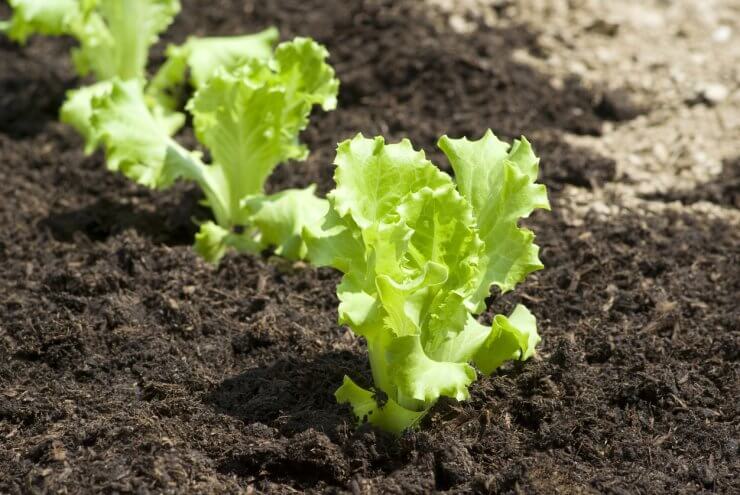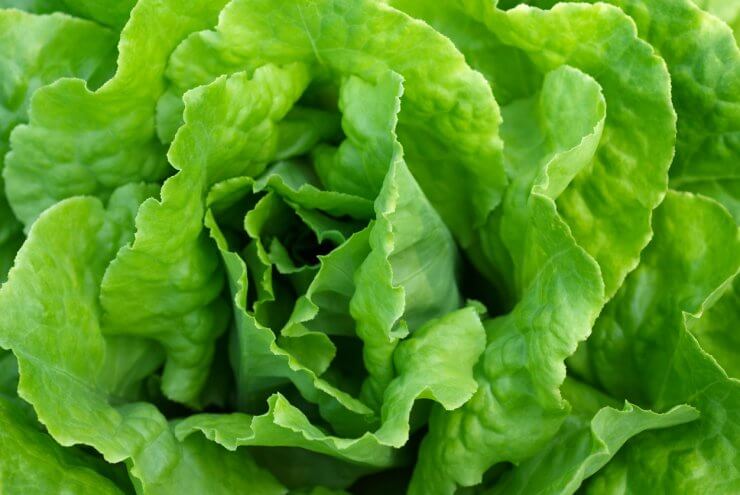
One of the reasons I love to grow lettuce is that it can withstand some pretty cool temperatures and the shorter days of fall here in the northeast. It also grows quickly, meaning there’s less time for my lettuce patch to run into problems with diseases. There is one exception, though: lettuce downy mildew.
If you’ve ever noticed light green or yellowish, angular spots on your lettuce leaves, that could be a symptom of downy mildew. Leaves may eventually turn brown, and you may also find a white, fuzzy growth on the underside of the leaves. Here’s what you can do about it.
Discover the 3 top options for growing vegetables indoors—when you access the FREEBIE Growing Vegetables Indoors for Beginners, right now!

What to do about lettuce downy mildew
If you catch lettuce downy mildew early enough, you may still be able to harvest the lettuce hearts after removing the infected outer leaves. Of course, the easiest way to deal with the disease is to prevent it in the first place.
There are a few varieties of lettuce that have resistance to downy mildew and other common pathogens. However, the University of Arizona College of Agriculture and Life Sciences points out that downy mildew is a “very adaptable pathogen,” and may be able to infect some otherwise resistant varieties of lettuce.
There are still several steps you can take to prevent and limit the disease. Like many pathogens, poor air circulation can lead to infection and the growth of lettuce downy mildew. Therefore, whether you’re planting lettuce outdoors or as part of an indoor garden, be sure to leave enough room for air to circulate among plants. For an indoor garden, use a small fan to air circulate, which can help prevent a number of vegetable plant diseases. If you have a greenhouse, be sure there is ventilation for humid air to escape.
Drip irrigation is another best practice for dealing with a variety of plant diseases. Leaves that get damp from overhead watering, especially in the evening, are more conducive to the growth of fungal infections. That’s true for lettuce and most other vegetable plants. If you don’t have a drip irrigation system, try your best to water the base of your plants and the soil rather than the entire plant.
And water your garden early in the day, too, so any water on the leaves has time to evaporate. Again, this is a good idea for all of your plants and not just to prevent lettuce downy mildew.
Lastly, if you’re finding that your lettuce is still infected despite your efforts, crop rotation might be the way to go. While lettuce downy mildew is more often a wind-blown infection, it is possible for the spores to live in the soil. And like other suggestions, rotating your vegetables is a good practice anyway, as it helps limit the spread of other diseases and contributes to soil health.
Have you had to deal with infections in your lettuce plants? How did you solve the problem?
Discover the 3 top options for growing vegetables indoors—when you access the FREEBIE Growing Vegetables Indoors for Beginners, right now!




